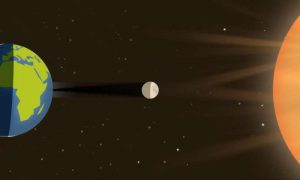
We all have heard how beautiful and jaw dropping a total solar eclipse can be but next month is another opportunity for scientists to uncover some mysteries. The 2017 total solar eclipse offers a unique opportunity simply because of modern times, an entire country can be involved with this generational event. Between modern technology and social media, this will be the most documented eclipse to date by far. Scientists won’t be the only ones called upon to conduct research and add to the science during this event. Plenty of projects are involving citizen scientists to help photograph the Sun in unprecedented ways and take measurements with their phones. One project coming from the University of California Berkeley and Google is called the Eclipse Megamovie project. This project is calling on volunteer photographers, amateur astronomers and the general public to photograph the eclipse with their phone or camera. The project will then take all of the photos submitted to the project and combine them to create an expanded and continuous view of the eclipse as it moves across the United States.
Scott McIntosh, the director of NCAR’s High Altitude Observatory had this to say about the eclipse to the National Science Foundation: “This is a unique opportunity to communicate the fact that our star is complex, beautiful and mysterious. At the same time, it’s more critical than ever to study it, as solar activity can pose significant threats to our technologically driven society.” Hugh Hudson, a solar physicist at UC Berkeley is especially intrigued at studying the Sun’s corona. “By doing so, we will learn more about space weather phenomena. All you need to do to participate in this specific project is be in the path of totality and download the free Eclipse Megamovie app. There are dozens of research projects that are ready to take advantage of this event and hope to produce new science results with your help!”

Image: NASA GSFC/SVS
Another citizen science effort that’ll be aimed toward the eclipse is a project coming out of the University of Missouri in Columbia. Bohumil Svoma and Jeffrey Wood will be leading a team of students and citizen scientists that will be using ground based instruments and weather balloons. This project will be looking into the atmospheric science effects of the total solar eclipse. They’ll be taking standard atmospheric measurements such as temperature, humidity, wind and carbon dioxide exchange in attempt to map the changes in the land and lower atmospheric conditions. The eclipse will cause rapid and unique changes in local weather due to solar radiation decreasing up to three times faster than it would during a sunset.
A project being led by Montana State University will be another citizen science effort where over 52 teams from over 30 states will be launching high altitude balloons during the eclipse. This project will have the teams spread out over the totality path for the eclipse on August 21st and each balloon will have a camera payload that will provide near real time footage of the moon’s shadow on Earth and the darkened Sun. Additionally, each team will then be able to design and launch a second payload where they can conduct any experiment they would like to. From , atmospheric responses to better understanding space weather, there will be a lot of science coming out of this total solar eclipse.
One last fascinating thing about this eclipse is the opportunity it offers for a public outreach event. For some, this is a once in a lifetime event and described as an awe inspiring moment. On August 21st, future scientists could be born on the spot, this could inspire kids to pursue a career in the STEM field. This is also the perfect opportunity to educate the public about the fascinating fields of Earth and Space science. Many of these citizen science projects and any ground based projects will be hosting some sort of local outreach event. In less than a month people will be flocking from all over the world and new science experiments and results will be underway.